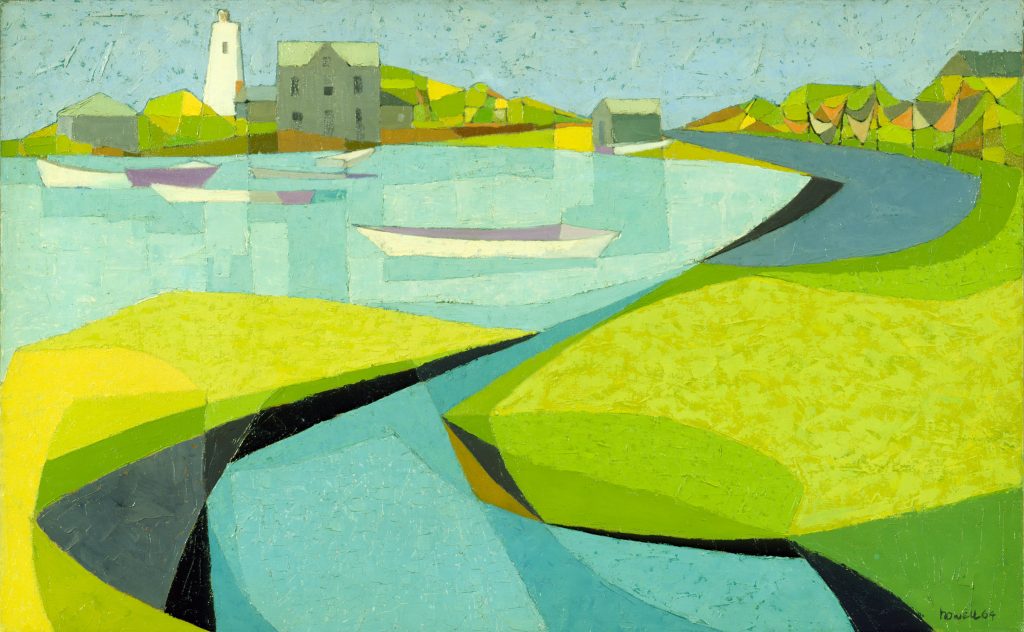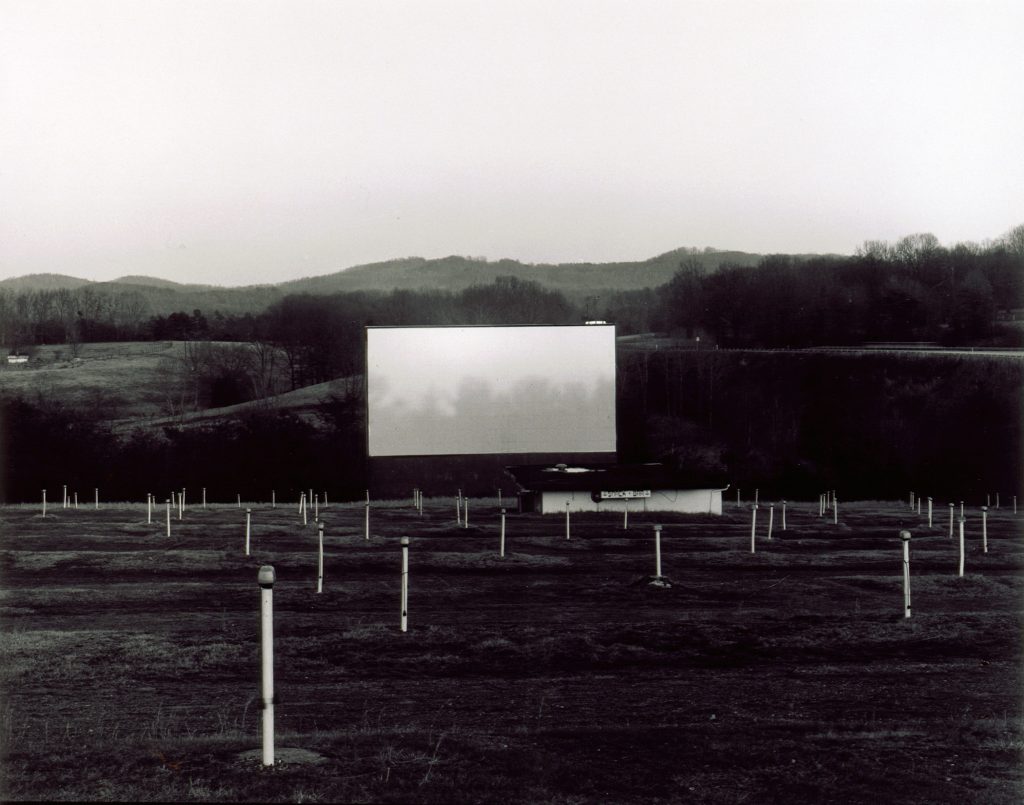1. Introduce the three regions of North Carolina (Coastal Plain, Piedmont, and Mountains). Ask students to talk about the region they call home. What defines where you live? What characteristics give your home region a sense of “place”? How would you choose to represent your region in a work of art? What colors would you choose? What landmarks would you show?
Then, display the works of art on the overhead or interactive whiteboard. Have the students guess what part of the state each represents, and then ask them to explain the rationale behind their responses. Consider questions that explore subject matter and how artists’ choices can create a sense of place for the regions represented. For each work ask: How is the artist’s representation of the place or region similar to or different from what you would have done? What would you have shown that the artist did not?
Coastal Plain: Identify buildings and objects in this scene.
- Why does North Carolina have so many lighthouses? (North Carolina is called the Graveyard of the Atlantic because of the many shipwrecks that have occurred here.)
- What colors has the artist used? (blue, green)
- Why did he pick these colors? (water tones, calming)
- What are some activities you can enjoy at the beach? What does the Coastal Plain look like in the areas farther away from the ocean? (flat, sandy land)
Piedmont:
- Could you visit the artist’s mother’s farm and take a picture identical to this painting? Why or why not? (No, the artist was inspired by the views at his mother’s farm, but he did not copy them directly.)
- What time of day is shown here? (The orange colors suggest a sunrise or sunset.)
- Locate Alamance County on a map. What metropolitan areas are near? (Alamance County is located between the Triad and the Triangle regions.)
Mountains:
- What is depicted in this scene? (a drive-in movie theater)
- Have you ever been to a drive-in? Is there one in your area? When do you think this picture was taken? (early 1980s)
- Why is the black-and-white photograph appropriate for a portrayal of the Mountains? (Both have a relationship to the past—the mountains through traditions, and black-and-white photography through changes in technology.)
Share additional photos or paintings from the region to explore key concepts such as climate and geography.
2. Break the class into groups of three students. Assign each trio a region of North Carolina (it is OK if more than one group works on the same region).
3. Instruct the students to research their assigned region thoroughly. Provide books, Internet Web sites, and additional printed materials that may be helpful (see Lesson Resources for starters).
4. Review these instructions for the group project assignment:
a) Create a game to learn and review key vocabulary, famous places, and other tidbits of information about your region. Use your imagination! You may either craft an entirely new activity or add a twist to an old favorite (such as Monopoly or Chutes and Ladders).
b) Draw your game board in the shape of your respective region.
c) Using Artist Trading Cards as inspiration, design game cards based on your collected research information. Make the images on the cards correlate to the information or trivia used on the reverse side. Recall the class discussion about what you would choose to represent the region, and pay special attention to the colors selected. For example, one card might show the skyline of Charlotte on one side and read “Name the county where Charlotte is located (Mecklenburg) and move two spaces forward” on the other. Questions must address climate, major landforms, bodies of water, natural resources, major cities, recreation areas, industry, farming, and cultural interests.d) Type up a list of directions to include with your game board.
5. Provide students with ample time during the school day to work with their partners to locate relevant research and complete the outlined project.
6. When the due date arrives, ask the groups to share their games with the class, and have the groups play their peers’ games.
Written by Jill Taylor, NCMA Educator


